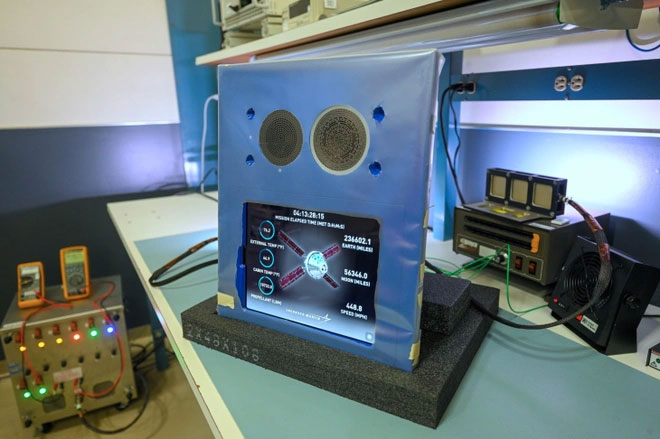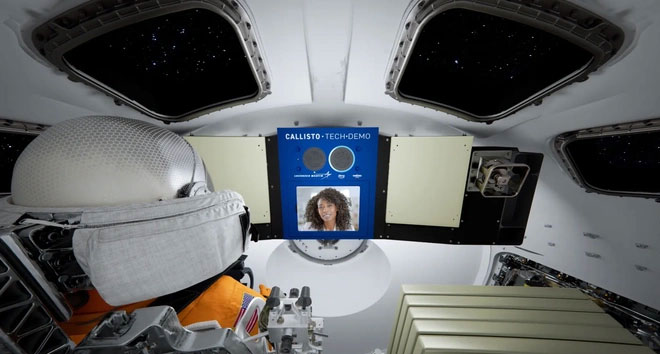NASA to Equip iPads on Artemis 1 Mission for Voice Assistant System Testing, Supporting Astronauts on Their Return to the Moon.
Artemis 1, the groundbreaking project for NASA’s return to the Moon, is set to launch in late August. Although there will be no crew on board, a special device making an appearance on the mission will be Apple’s iPad.
The primary goal of Artemis 1 is to test the effectiveness of the heat shield on the Orion spacecraft’s crew module. In addition, NASA will utilize the iPad to experiment with Callisto technology.
According to 9to5Mac, Callisto is a collaborative development by NASA and aerospace company Lockheed Martin, integrating the virtual assistant Alexa with Cisco’s WebEx online conferencing platform.

Callisto system on the Orion spacecraft includes an iPad. (Photo: Lockheed Martin).
During the Artemis 1 mission, NASA will demonstrate the use of a voice-activated virtual assistant to support the working and living conditions of astronauts aboard the Orion spacecraft. In addition to its self-developed communication system, an iPad will be available to facilitate communication.
“I can envision a future where astronauts can issue voice commands to receive mission information, such as spacecraft direction, water levels, or voltage,” said Howard Hu, Deputy Program Manager for Orion at NASA’s Johnson Space Center.
“The funded system will be located on the central control panel of Orion, featuring a tablet to test Cisco’s WebEx video calling software, transmitting video and audio signals from the Mission Control Center at Johnson. The hardware and software customized by Lockheed Martin and Amazon will be used to test Alexa, Amazon’s voice-based virtual assistant, to respond to transmitted audio,” a NASA representative stated.
Since Artemis 1 has no crew, NASA essentially uses the iPad as an astronaut to command Alexa in space, with commands issued from Mission Control on the ground.
Specifically, ground staff will use a camera and microphone to send commands to the iPad. Their images and voices will be transmitted from the tablet via WebEx video calling software to the virtual assistant on the spacecraft.
Due to latency issues when transmitting signals over long distances, NASA has integrated Callisto with the Deep Space Network and Amazon’s Local Voice Control system to query data.
On Orion, Alexa can access real-time spacecraft data. This allows astronauts to ask questions like “Alexa, what speed is Orion traveling at?” and receive immediate feedback. Other commands, such as inquiring about cabin temperature or activating spacecraft systems, can also be executed by voice.

Illustration of Callisto on the spacecraft. (Photo: NASA).
This is not the first time Apple devices have been used for space missions. For instance, NASA’s Mars rover is equipped with a customized iMac G3 CPU. An Apple Watch Series 6 and an iPhone 12 Pro have also been sent aboard a SpaceX spacecraft to monitor astronaut health.
The Artemis 1 flight is expected to launch in late August on the Space Launch System (SLS), the world’s most powerful rocket. The Orion spacecraft will be propelled into orbit around the Moon, spending 42 days in space before returning to Earth.
According to NASA, the mission aims to land the first woman and the first person of color on the Moon. In 2024, astronauts will board Orion for the same journey. Through this project, NASA will explore various areas on the Moon and establish the first long-term presence there.





















































